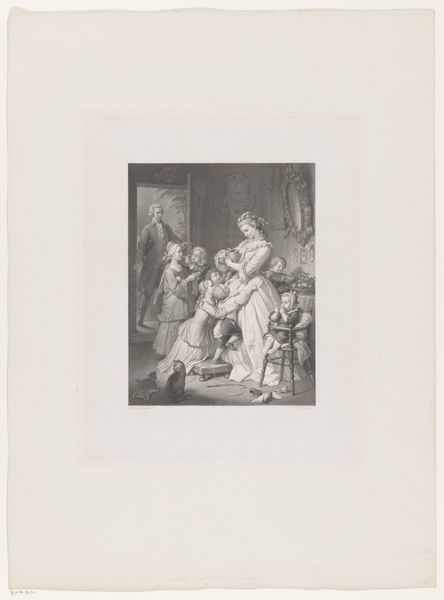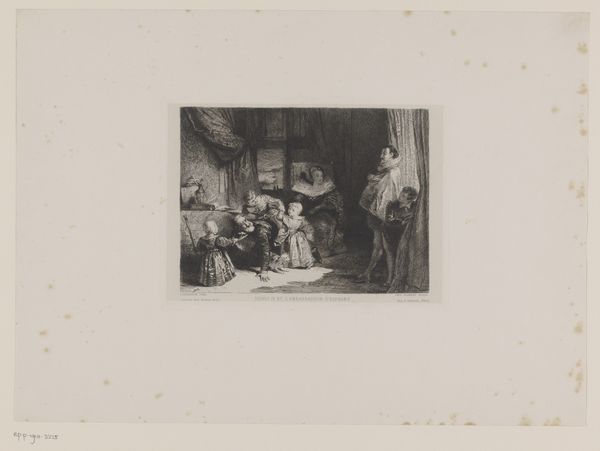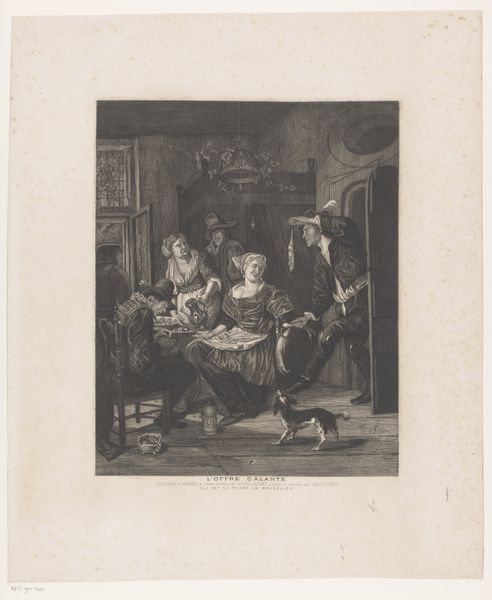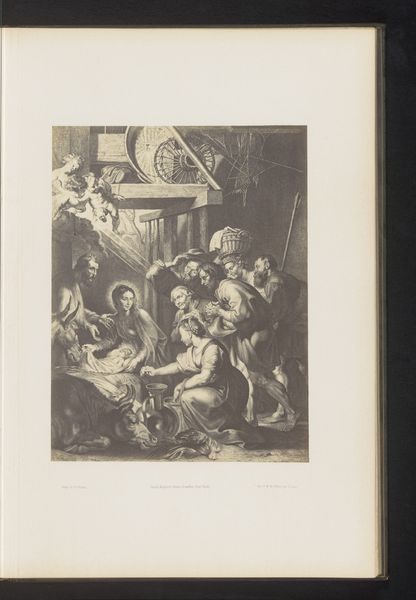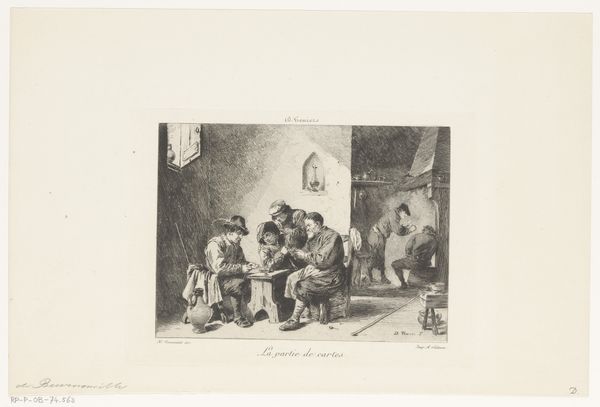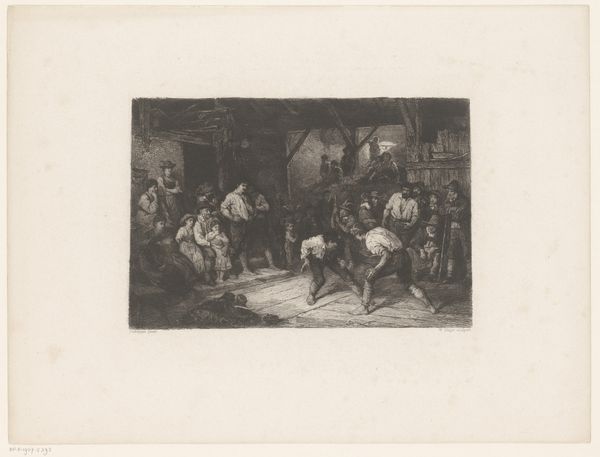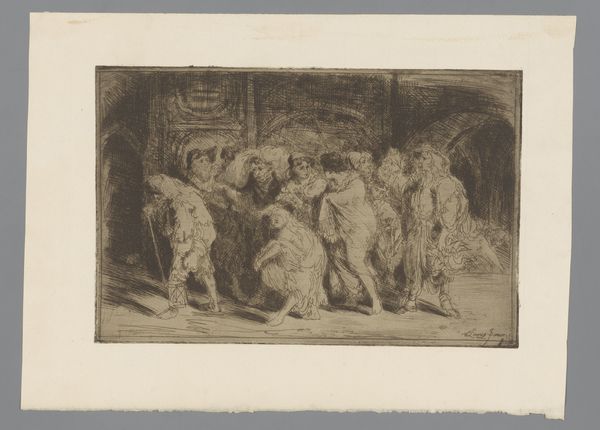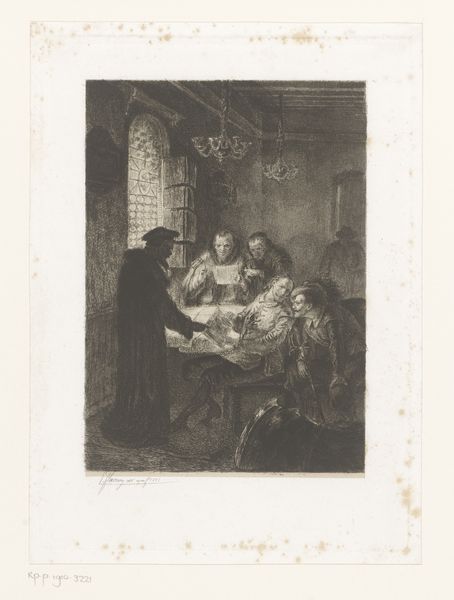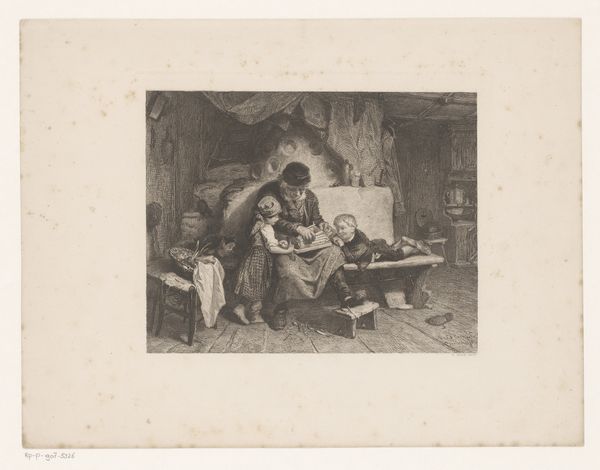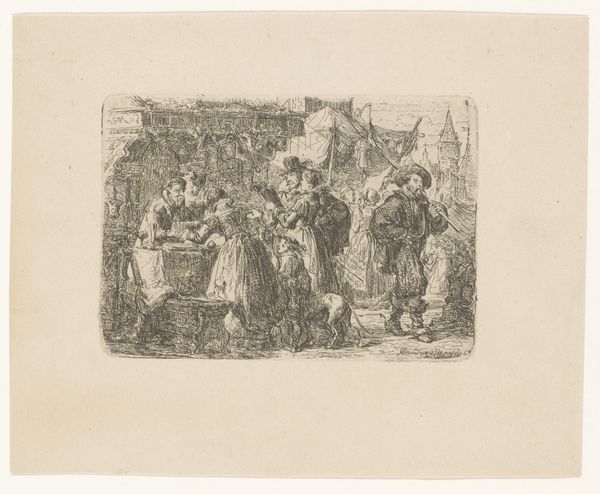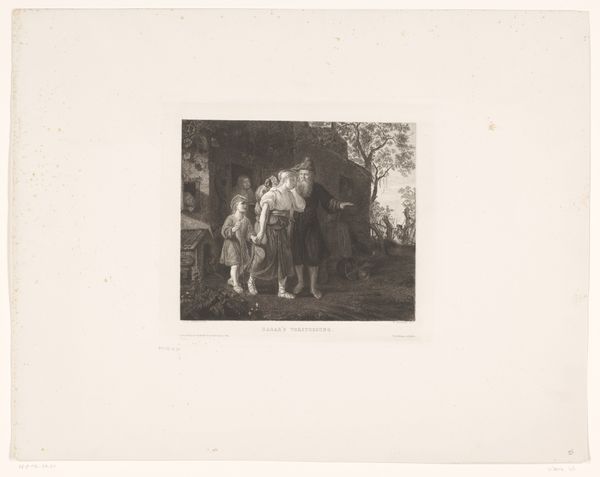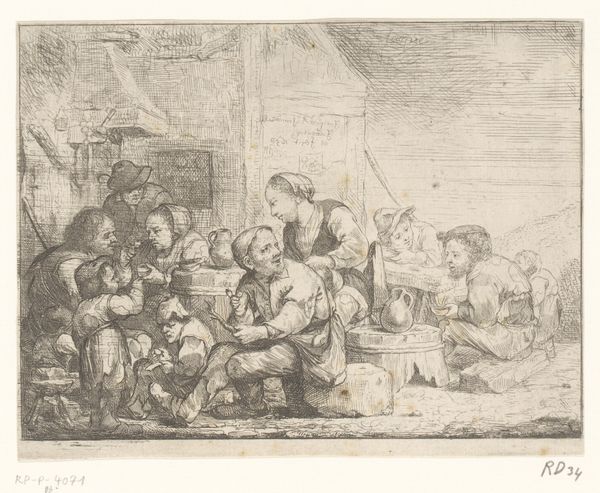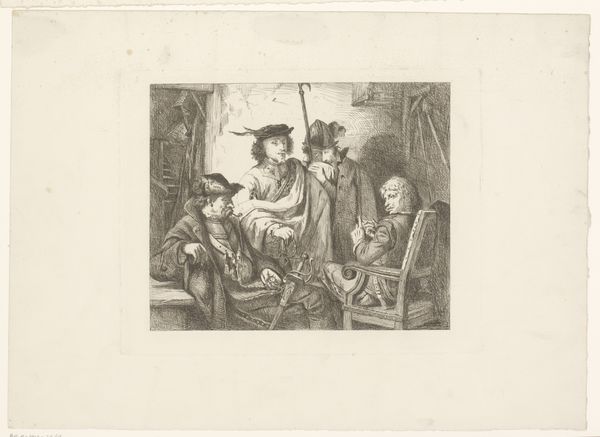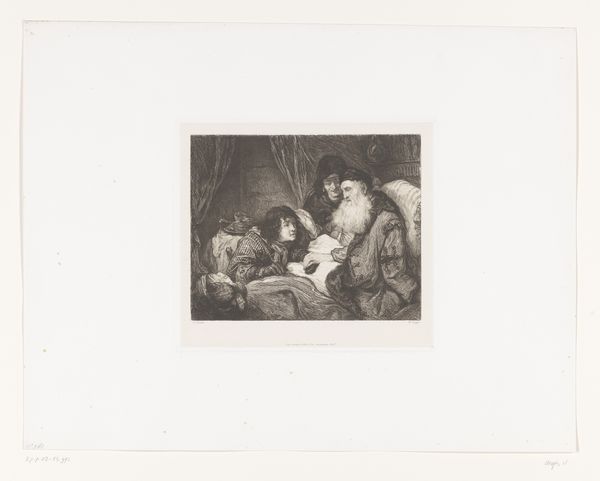
print, etching, paper, ink
#
portrait
#
ink paper printed
# print
#
etching
#
paper
#
ink
#
genre-painting
Dimensions: height 241 mm, width 318 mm
Copyright: Rijks Museum: Open Domain
Editor: So, this is Antonio Casanova y Estorach’s "Interior with Four Older Men, Including a Deaf Man" from 1878. It’s an etching, and the atmosphere feels… gossipy? There’s something about the huddled figures that suggests intrigue. What do you see in this piece? Curator: It strikes me as a pointed commentary on societal structures of communication and exclusion. The deaf man, the focal point, becomes a symbol for those marginalized, literally unheard. Consider the historical context: During this era, how were disabled people perceived and treated? How did the dominant ableist ideology shape their experiences? Editor: That's a powerful way to look at it. I was just thinking about the composition, but your approach really opens it up. It feels like the artist is questioning who gets to participate in the conversation, right? Curator: Exactly! And it's not just about physical deafness, is it? Who else is metaphorically deafened within this scene, or by broader societal forces? Who has the power to speak and be heard, and who is silenced? Is this portrayal a sympathetic one, or does it subtly reinforce existing prejudices? Editor: It's unsettling to think the artist might be reinforcing prejudice! How do we even start to figure that out? Curator: We need to explore Casanova’s other works, understand the prevailing attitudes toward disability in 19th-century Spain, and consider the artwork's reception at the time. Doing so allows us to contextualize the scene beyond a surface-level reading. Editor: Wow, there's a lot more going on here than I initially thought! This reminds us that art can both reflect and challenge the social norms of its time. Curator: Precisely. Art serves as a mirror and a hammer, simultaneously reflecting our realities and forging new perspectives. Editor: Thanks. Now I look at it differently. There's a sense of unease that prompts us to think about who's in on the joke, and who’s left out. Curator: Indeed. And hopefully, to challenge the structures that perpetuate that exclusion.
Comments
No comments
Be the first to comment and join the conversation on the ultimate creative platform.
